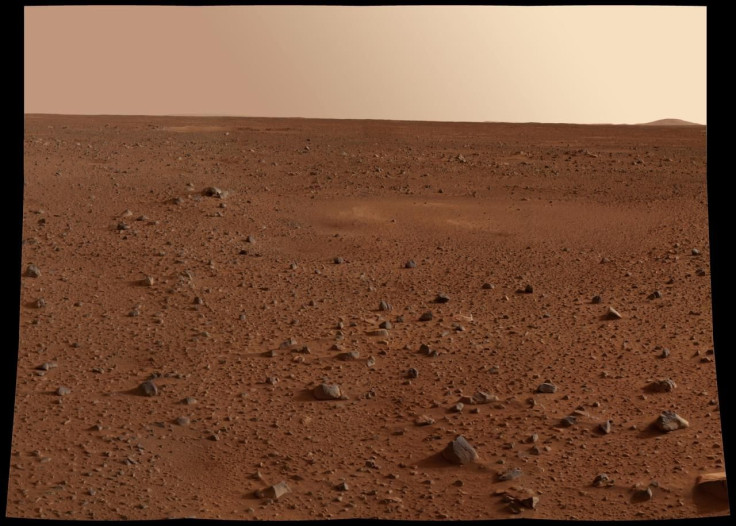NASA Photo Captures 'Penguin' On Mars; Images Spark Conspiracy Theories

When it comes to finding “life” on planet Mars, no one does it better than space geeks and “UFOlogists.”
Of course, life in this instance is most likely inanimate objects such as rocks shaped like real lifeforms such as rats, pigs and birds. This, however, doesn’t curb the enthusiasm of space theorists who spend hours pouring over photos taken mostly by NASA’s Mars Curiosity rover trying to spot anomalies and perhaps stumble on big discoveries.
One of the latest is a space geek’s “discovery” of what looks like a Humboldt penguin hiding behind rocks on Planet Mars. According to a report, Steve Martin noticed a head poking out from a Martian rock in one of the photos taken by the Curiosity rover.
“I’ve always thought there was life on Mars and now I think I might have proved it. I have spent hours looking at Nasa images but I never thought I would find a penguin. I don’t know how it got up there but I hope NASA carefully study the picture and can work out how and why,” Martin said.
The space geek submitted his “findings” to the TV Show, NASA: The Unexplained Files and claims that they are now looking into it.
The recent discoveries of these “lifeforms” have sparked numerous conspiracy theories regarding the U.S. space agency’s mission on the Red Planet. One of the most resounding is the idea that all photos taken by Curiosity were actually taken not on Mars but on Earth.
One of the newest photos, a picture that shows a speck of black seemingly “flying” along the mountainous region of the planet, is believed to be an actual eagle flying along the horizon of Devon Island in Canada. Devon Island’s surface features are said to be similar to that of the Red Planet so it could easily be a setting for some believable Mars photos.
The theory, however, comes from notorious UFOlogist Scott Warring, who once said that a 2012 photo of NASA showcased a pig on Planet Mars. He offered the explanation that scientists probably put the pig there to see how it would react to Mars’ atmosphere. He did not explain, however, how the pig survived the long journey to Planet Mars or how it can even stay alive in the planet’s volatile atmosphere.
© Copyright IBTimes 2024. All rights reserved.





















